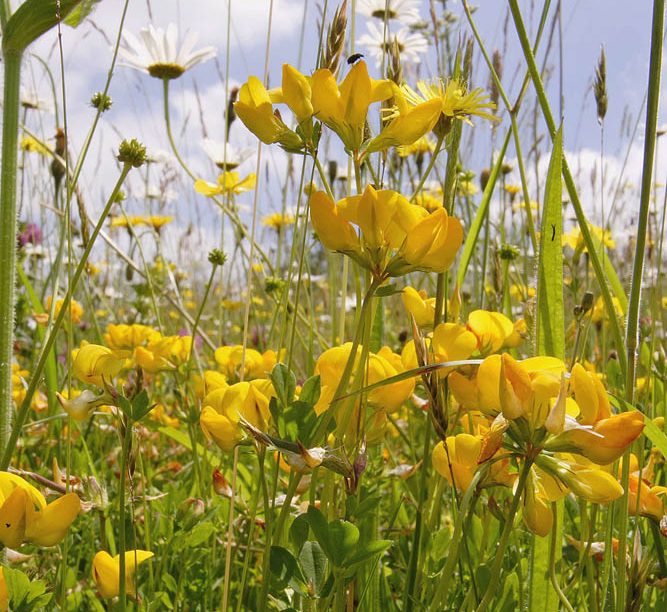Description
Birdsfoot trefoil is a perennial legume of short to medium height. Cultivated varieties of this species tend to be significantly taller than wild native forms, having a more lush and erect growth form; tallest when growing amongst, and supported by grasses. They have trifoliate leaves (hence ‘trefoil’), flowers in clusters which are mainly yellow (less orange and red tinges compared to wild forms), and long cylindrical pods in groups which spread out to resemble a bird’s foot.
Habitat Information
Birdsfoot trefoil is a plant of unproductive grasslands in the British Isles on a wide range of soils, absent only from damp sites and very acid or very infertile soils. It is intolerant of high nitrogen levels and is easily lost when grasslands are fertilised. Birdsfoot trefoil is a long-lived perennial with a deep tap root capable of surviving on drought prone sites.
Birdsfoot trefoil is mainly pollinated by bees and is the larval food plant for a number of moth species including both six and five spot burnet, and of the common blue butterfly.
Historically birdsfoot trefoil as a forage legume has been of limited interest to farmers in damper climate of Britain where clovers perform much better. It has been more popular in drier continental parts of the world on poor land.
Growing Information
Birdsfoot trefoil can be sown at any time of the year when soil and weather conditions are suitable. Young seedlings are susceptible to slug and frost damage so are best sown in good growing conditions in late spring or early summer.
Once established cultivated forms of Birdsfoot trefoil can grow quite prolifically, particularly so when growing on soils with a high residual phosphate index from past cropping combined with depleted soil nitrogen availability (a quite common scenario on arable land). This competitive prolific growth compared to native prostrate forms makes it unsuited to inclusion in wild flower habitat mixtures.
It provides a good pollen and nectar source for bees and can be utilised as a food plant by moths and butterflies. Cultivated forms are not as persistent as wild forms and likely to last 3-4 years.
As a forage legume, its main use is for sowing with grasses on land which is too poor for more productive clovers. As with clovers and other legumes it fixes nitrogen from the air. Its foliage, mainly produced in summer, is palatable and rich in protein. In recent years, interest has grown in its special ability to offer bloat free grazing and also potential anthelminitic effects both as a result of the tannin content of its foliage (a quality also found in Sainfoin but not in other clovers).


